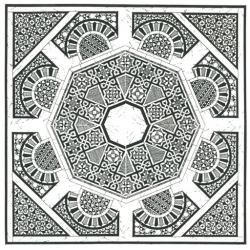In times of conflict, language and image are spun to shape perceptions of reality and it is through the characterizations and emotional colouring of the media’s visual language and their choice of terminology that events are interpreted, explained, and experienced. Just as symbolic religious language gives meaning and an interpretation to the world, so also the images and language of the media present a filter through which people view the world and react to unfolding events. To the extent that this language is adopted, accepted, and disseminated by the media and absorbed by the average citizen, it becomes an instrument in defining the role and shaping the response of the general public.
People look to the world around them and derive a significant portion of their concepts of value and worth, benefit and harm, from their interaction with society and from the images of their society and the wider world that are endlessly paraded before them through all the various sources through which they draw their information. This information environment and its content plays a powerful role in shaping and re-shaping viewpoints, eliminating or creating biases and prejudices, and defining boundaries and contexts within which people find their social identity. That identity which was once achieved through family, community, church, temple, or mosque is now driven largely by the media in all of its myriad manifestations.
As a result, the media is probably the most potent modern tool available to those seeking to change or condition a society’s viewpoints, biases, and identity. It has a positive function in that it plays a powerful role in creating a shared societal identity – it has a negative role in that due to economic and political realities, the major media are for the most part, profit-oriented heavily commercialized corporate enterprises. Depending on the ownership and stakeholders, strong biases are expressed so that a news network, especially during times of crisis, disseminates specific points of views, to the extent that it can become little more than a purveyor of propaganda.
And they’re highly networked enterprises in that whatever approach or tactic is seen to draw an audience or is successful in a given area rapidly propagates in slightly different forms across the range of media offerings. Ideas and values are shared, augmented, buttressed, sustained, and reinforced across this range. Despite the fact that there is commercial competition between media entities, that very competitiveness leads them to produce “competitive” variations of each others products which often amounts to little more than a repackaging of what another company has produced – the same news and opinion formula in a new guise or flavour. In times of crisis the same “experts” appear and reappear across the various television and radio networks until, in effect, a fairly narrow and constricted range of interpretations of events propagate across the airwaves, internet, and streaming services.
In this way the visual and aural language of the mass media in times of crisis acquires a real potency and currency – one that is countered only through the growth and accessibility of alternate sources, through grassroots connectivity, and through our growing ability to filter out bias and spin. This is currently a chaotic process still very much at an early stage of development where new social networks and connections are being formed – but there is still a long way to go.

